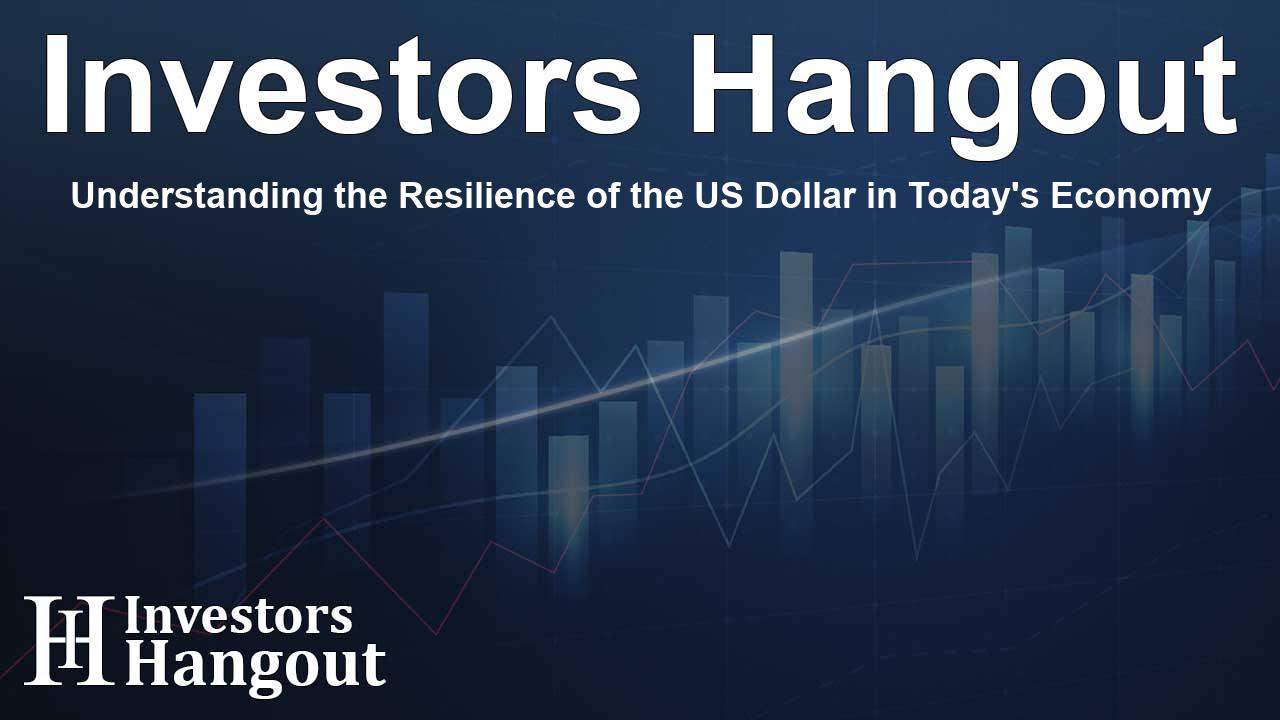Understanding the Resilience of the US Dollar in Today's Economy

The Stability of the US Dollar: An In-Depth Analysis
For nearly two decades, numerous forecasts have predicted an imminent crash of the US dollar. Despite these claims, the dollar remains surprisingly stable. Currently, it sits at 106.62, significantly recovering from its 2008 low of 72.23, showcasing a robust increase of 47.61%. This apparent stability raises the question of why the dollar has not experienced the anticipated downturn.
Many voices in the financial discourse continuously warn of a dollar collapse, often for ulterior motives such as promoting gold or silver investments, or even selling literature that capitalizes on readers' concerns. While there is merit in exploring investment options in precious metals, it’s important to recognize the underlying reasons behind the dollar’s resilience.
Historical Context: The Shift in Economic Perspectives
In the early days of my financial exploration, I was heavily influenced by the views of Ron Paul and Austrian Economics. This journey pushed me to seek deeper understanding, particularly concerning gold and its role in a balanced portfolio. At the Austrian Scholars Conference, however, I found that many proponents of this economic ideology struggled to provide substantial insights into the true value of gold.
One prevalent belief among Austrian scholars is that inflation arises solely from an increase in the money supply. While this viewpoint holds some truth, it overlooks crucial factors such as credit that contribute significantly to inflation dynamics. For instance, various economists frequently assert that the dollar has lost 97% of its purchasing power since a certain year, a claim grounded in Consumer Price Index (CPI) calculations that fail to capture the full picture.
The Constitutional Basis for Currency Value
The formation of the United States Constitution established specific guidelines regarding money, defining it primarily as a certain weight of silver. The departure from this standard, particularly after the abandonment of silver coinage in 1964 and subsequently the gold standard in 1971, has led to considerable shifts in purchasing power, demonstrating how government decisions can profoundly impact currency value.
If silver had remained the standard, contemporary purchasing power would starkly contrast with today’s devaluation, where even a single 90% silver Washington quarter would amount to $23.42 in today’s market, highlighting how silver retains its value over time.
The Dollar's Multifaceted Role in the Global Economy
The US dollar serves as a benchmark against a collection of global currencies, including the euro and the Japanese yen. Although the dollar index reflects the currency's strength against these others, the relationship tells a more complex story about global economic conditions. Since 2004, gold has significantly appreciated in value against the euro by approximately 763.53%, yet the dollar's strength appears unscathed.
As we consider the broader implications, it becomes evident that comparing currencies provides limited insight into inflation trends and purchasing power. Each currency is essentially a debt instrument, lacking intrinsic value beyond its purchasing power. This reality complicates the perception of dollar stability, especially as nations grapple with substantial debt ratios.
The Ongoing Specter of National Debt
As nations continue to accumulate debt, the situation only grows more precarious. The US debt-to-GDP ratio stands at an alarming 122.30%, indicating systemic weaknesses in fiscal policy. What contributes to the dollar's endurance, paradoxically, is the prevailing uncertainty surrounding other currencies, positioning the dollar as a comparatively safer harbor amidst global economic turbulence.
The interplay of the US national debt and consumer debt highlights a precarious balance. With consumer bankruptcies climbing, the implications for economic stability remain uncertain. Collectively, we are witnessing an environment where consumer debt mirrors government borrowing, reflecting an unsustainable trajectory that demands scrutiny.
Finding Value in Precious Metals
The age-old debate about whether to invest in gold or silver remains relevant, particularly as their intrinsic values offer a significant buffer against inflation and uncertainty. As gold and silver maintain their purchasing power over consistently devalued fiat currencies, savvy investors are likely to pivot towards these assets, seeing them as a safeguard against the inevitable economic shifts that lie ahead.
Conclusion
Ultimately, the dollar's viability hinges not only on its internal dynamics but also on the performance of other currencies that create a tapestry of global economic interaction. As the dollar continues to hold its ground, it's crucial for investors to consider alternatives such as gold and silver. By embracing precious metals, individuals may secure their wealth against potential downturns, protecting themselves from the inflationary tide.
Frequently Asked Questions
What factors influence the stability of the US dollar?
The dollar's stability is influenced by its performance against other currencies, overall economic conditions, inflation rates, and global uncertainty.
How does government debt affect the dollar's value?
High levels of government debt can undermine confidence in a currency, but economic uncertainty can make the dollar appear stronger in comparison to others.
Why do many believe in an inevitable dollar crash?
Many forecasts stem from fears about inflation and governmental fiscal practices; however, these predictions do not consider the comparative strength of the dollar against its peers.
What role do gold and silver play in hedging against inflation?
Gold and silver retain their purchasing power over time, making them effective hedge options against inflation compared to fiat currencies.
Is it advisable to invest in precious metals now?
Considering current economic uncertainty, investing in gold and silver may provide a safeguard for wealth, buffering against potential currency devaluation.
About The Author
Contact Caleb Price privately here. Or send an email with ATTN: Caleb Price as the subject to contact@investorshangout.com.
About Investors Hangout
Investors Hangout is a leading online stock forum for financial discussion and learning, offering a wide range of free tools and resources. It draws in traders of all levels, who exchange market knowledge, investigate trading tactics, and keep an eye on industry developments in real time. Featuring financial articles, stock message boards, quotes, charts, company profiles, and live news updates. Through cooperative learning and a wealth of informational resources, it helps users from novices creating their first portfolios to experts honing their techniques. Join Investors Hangout today: https://investorshangout.com/
The content of this article is based on factual, publicly available information and does not represent legal, financial, or investment advice. Investors Hangout does not offer financial advice, and the author is not a licensed financial advisor. Consult a qualified advisor before making any financial or investment decisions based on this article. This article should not be considered advice to purchase, sell, or hold any securities or other investments. If any of the material provided here is inaccurate, please contact us for corrections.
